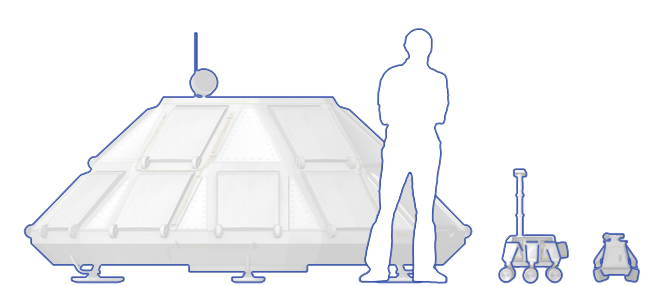When NASA began its unmanned mission to Mars in 2003, they wisely chose to send two rovers—Spirit and Opportunity—so that if one broke down, the mission could still be successful. Here at the eXoplanetary Research Institute (XRI) we call that "redundancy lite." For the Extrasolar project, we've packed so many rovers aboard Interstellar I, that there's no way we could control them all without bringing in assistance from volunteers like you.
Since we didn't know what conditions to expect in advance, our rovers have an enormous variety of capabilities. To keep costs low, we used a lot of consumer-grade electronics, some of which has been modified to operate under high atmospheric pressure, high moisture and a wide range of temperatures.
Each rover is about the size of a large toaster when it's folded up aboard the Interstellar I probe. The rovers unfold to reveal six independently articulated legs with wheels, solar panels and a head with multiple sensors, including a camera that can extend to one meter (3.3 feet) above the ground.
As project liaison Robert Turing explained, "The idea was to keep rovers as simple and lightweight as possible. The rovers will communicate over short distances with lander modules which will, in turn, relay messages back to a communications base station that will remain in orbit. From there, the messages will be relayed back to Earth using a proprietary communications technology."
To stay informed about the Extrasolar project, please follow us on Facebook or Twitter. If you want to be the first to know when we start accepting applications to the rover pilot program, sign up on our mailing list.

